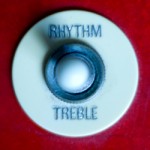I bought some macro extender tubes from eBay a couple of months ago. They seem to come in two flavours: those which have electronic contacts and those without. I went for the economy option because, including postage, I picked them up for about 10 quid.
As I’ve mentioned elsewhere, I’ve found TWIP to be a particularly useful resource, and there was a video podcast a month or so ago about what one of the presenters carries around in his camera bag. He happened to mention that he carries the extender tubes – albeit a posher variant than I bought, with contacts – and used them in conjunction with his 50mm F1.4, as it has very good optical performance. Having just bought the same lens, and just decided against buying a macro [for the time being], I thought it would be cheap, interesting experiment.
I’ve read around the subject, and the principal functional difference between the contact and non-contact varieties appears to be aperture control: in simple terms, the camera doesn’t know that a lens is attached, and shoots wide open. Metering still works though.
Narrow depth of field appears to be an endemic problem with macro photography. Combining macro-style focussing distances with a lens that is defaulting to F1.4… Not good. I’ve completely written off trying to use the extenders on any subject that isn’t just flat, but completely parallel to the lens. I could try it with my 28-135, which is going to default to f3.5, but have made the assumption that the lower optical quality is going to exacerbate other problems, such as chromatic aberration. So, you’re faced with a problem of trying to use the extenders with the slowest lens that you have, which isn’t normally high on the list when you’re buying.
The real problem with the extenders is a serious drop-off in optical performance the further away from the centre of composition. This is about as good as I’ve been able to get:

This is with the shortest configuration of the tube, and with the lens focussing at infinity [an effective focus distance of about 15-20cm] – only about half of the 45cm default of the lens without the tube. The longer the extender config, and the shorter the focus on the lens, the worse the drop-off in performance.
Having tried this about half a dozen times on different subjects, I’ve pretty much written the extenders off. The next image is less cropped than the one above, and shows the drop-off more clearly. There’s also an almost text-book example of chromatic aberration, with the shifting of the colours of the string directly above the string ‘Deluxe’ towards blue:







